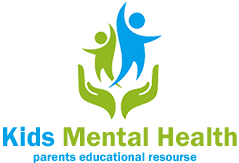Parenting can feel like an emotional marathon, with stress lurking around every corner – but building resilience isn’t just possible, it’s essential for both you and your children. Whether you’re dealing with tantrums, sleepless nights, or the constant juggle of work and family life, developing stress-management skills can transform overwhelming moments into manageable challenges.
As a parent, you’re already stronger than you realize. The key lies in recognizing your existing coping mechanisms while building new ones. Research shows that parents who develop strong resilience not only handle daily challenges better but also model essential life skills for their children. This ripple effect creates a more positive family environment where both parents and children can thrive.
In this guide, we’ll explore practical, science-backed strategies that fit into your busy schedule. These aren’t just temporary fixes – they’re lasting tools that help you build a foundation of emotional strength. From quick stress-relief techniques you can use during challenging moments to long-term habits that foster resilience, you’ll discover approaches that work for your unique parenting journey.
Let’s transform your relationship with parental stress, one step at a time.
Understanding Parental Stress and Its Impact
Common Triggers of Parental Stress
Understanding what triggers parental stress is the first step toward building resilience. While every family’s situation is unique, certain challenges consistently emerge as common sources of stress for parents. Daily routines, such as managing morning schedules or bedtime battles, can create ongoing tension. Financial pressures, particularly those related to childcare costs and educational expenses, often weigh heavily on parents’ minds.
Balancing work and family responsibilities frequently leads to feelings of being stretched too thin, especially for single parents or those without strong support systems. Behavioral challenges, developmental concerns, and academic pressures can also contribute significantly to parental stress. Many parents report feeling overwhelmed by societal expectations and the constant comparison with other families on social media.
Sleep deprivation, particularly with newborns or young children, can amplify these stressors and make coping more difficult. Additionally, relationship strain between partners often increases during parenthood, as time for connection becomes limited. The pressure to “do it all” while maintaining a perfect home, successful career, and engaging social life can create an unsustainable burden that leads to burnout.
Understanding these triggers helps normalize the stress experience and allows parents to develop targeted coping strategies.
How Stress Affects Your Parenting
When stress takes over, it can significantly alter how we interact with our children. Like ripples in a pond, parental stress has a far-reaching impact on children’s mental health and the overall family dynamic.
Parents experiencing high stress levels often find themselves becoming more reactive and less patient. You might notice yourself snapping more frequently, struggling to listen actively, or feeling emotionally distant from your children. These reactions, though understandable, can lead to increased behavioral issues in children and strained parent-child bonds.
Sarah, a mother of two, shares, “When I’m stressed, I catch myself being less present with my kids. Instead of engaging in their stories, I’m distracted and short-tempered. The guilt afterward only adds to my stress.”
Unmanaged stress can create a cycle where parent and child reactions feed off each other, potentially leading to decreased emotional security for children and reduced confidence in our parenting abilities. Understanding this connection is the first step toward breaking the cycle and building healthier family relationships.
Building Your Daily Resilience Practice

Creating Realistic Self-Care Routines
Creating healthy self-care habits doesn’t mean adding another overwhelming task to your day. Instead, think of self-care as small, manageable moments woven into your existing routine.
Start by identifying natural pauses in your day – perhaps during your child’s nap time, school hours, or after bedtime. Use these windows for brief self-care activities. Even five minutes of deep breathing while waiting in the school pickup line can make a difference.
Transform daily tasks into mindful moments. During your morning shower, practice gratitude. While preparing meals, listen to your favorite podcast. Turn cleanup time into a dance party with your kids – you’ll all benefit from the movement and joy.
Set realistic expectations. Self-care might look different in this season of parenting, and that’s okay. Maybe your workout is a 10-minute yoga video instead of an hour at the gym, or your meditation happens while folding laundry.
Create a “self-care menu” with quick options for different situations:
– 2-minute break: Step outside for fresh air
– 5-minute reset: Enjoy a cup of tea mindfully
– 10-minute recharge: Call a supportive friend
– 15-minute refresh: Take a power nap or do gentle stretches
Remember, consistent small acts of self-care are more sustainable than irregular grand gestures. Your well-being matters, and taking care of yourself helps you be more present and patient with your children.
Setting Healthy Boundaries
Setting healthy boundaries is crucial for maintaining your well-being as a parent. As Sarah Miller, a family therapist with 15 years of experience, often says, “Boundaries aren’t walls; they’re gates that help you manage your energy and relationships effectively.”
Start by identifying areas where you feel overwhelmed or drained. This might include work responsibilities bleeding into family time, excessive advice from well-meaning relatives, or difficulty saying “no” to additional commitments. Remember, it’s okay to prioritize your needs alongside your family’s.
Consider these practical boundary-setting strategies:
– Establish clear work-home boundaries, especially if working remotely
– Create designated “me time” periods and communicate them to your family
– Learn to say “no” to additional responsibilities without guilt
– Set limits on social media and digital distractions
– Communicate your parenting choices confidently with extended family
When implementing boundaries, use clear, respectful communication. For example, instead of saying “You’re always interrupting my work,” try “I need uninterrupted time between 2-4 PM to focus on work, so I can be fully present with the family afterward.”
Remember that boundaries may feel uncomfortable at first, both for you and others. Start small and be consistent. As one parent in our community shared, “Setting boundaries felt selfish initially, but it actually made me a more patient and present parent.”
Building Your Support Network
No parent should have to navigate the challenges of parenthood alone. Building a strong support network is like creating a safety net that catches you when parental stress becomes overwhelming. Start by identifying people in your life who can offer different types of support – whether it’s practical help with childcare, emotional support during tough times, or simply someone to share experiences with.
Consider joining local parenting groups or online communities where you can connect with others facing similar challenges. Many parents find comfort in knowing they’re not alone in their struggles. As one mom shared, “Finding my mom group changed everything. We share advice, laugh about our mishaps, and support each other through the hard days.”
Don’t hesitate to reach out to family members and close friends. Be specific about what kind of help you need – whether it’s watching the kids for an hour so you can take a break, or having someone to talk to after a particularly challenging day. Remember that accepting help isn’t a sign of weakness; it’s a sign of wisdom.
Professional support is equally valuable. Your child’s pediatrician, family counselor, or local family resource center can provide guidance and connect you with additional resources. Many communities offer free parenting workshops and support services – take advantage of these opportunities to expand your network while learning new coping strategies.

Emergency Stress Management Tools
Quick Calming Techniques
When stress feels overwhelming, these quick calming techniques can help you regain your composure in minutes. Start with deep breathing – inhale slowly for four counts, hold for four, then exhale for four. Repeat this cycle three times while focusing solely on your breath.
The “5-4-3-2-1” grounding exercise is another powerful tool. Name five things you can see, four things you can touch, three things you can hear, two things you can smell, and one thing you can taste. This simple practice helps anchor you to the present moment when anxiety starts to spiral.
For immediate physical relief, try progressive muscle relaxation. Starting from your toes and working up to your face, tense each muscle group for five seconds, then release. Many parents find this especially helpful before bedtime or during a child’s nap.
Keep a “calm down kit” in an easily accessible place. Include items like lavender essential oil, a stress ball, or a favorite photo. During challenging moments, step away briefly (ensuring children are safe) and use these tools to reset.
Remember, even a 30-second pause to splash cold water on your face or shake out your hands can interrupt the stress response. As one parent shared, “Sometimes just stepping outside and taking three deep breaths helps me respond to my children with patience instead of reaction.”
When to Seek Additional Help
While building resilience is important, there are times when additional support from mental health professionals can be invaluable. Watch for signs that stress is becoming overwhelming, such as persistent feelings of sadness or hopelessness lasting more than two weeks, difficulty performing daily tasks, or experiencing panic attacks.
If you notice changes in your eating or sleeping patterns, increased irritability that affects your relationships, or find yourself unable to enjoy activities you once loved, these could be indicators that professional help would be beneficial. Pay attention if you’re having thoughts of self-harm or feeling disconnected from your children.
Other warning signs include:
– Frequent angry outbursts that you can’t control
– Excessive worry about your children’s safety
– Physical symptoms like constant headaches or stomach problems
– Using alcohol or other substances to cope
– Feeling isolated or unable to ask for help
Remember, seeking professional help is a sign of strength, not weakness. Many parents benefit from speaking with a therapist or counselor who can provide targeted strategies for managing stress and improving family dynamics. Your healthcare provider can refer you to appropriate mental health services, or you can contact local parenting support groups for recommendations.
Don’t hesitate to reach out if you’re concerned about your mental well-being – your health matters, and getting help benefits both you and your children.
Making Resilience a Family Practice
Teaching Children About Emotions
Teaching children to understand and express their emotions is a powerful way to build resilience within the whole family. When parents actively engage in helping children manage emotions, they often find their own emotional awareness improving as well.
Start by creating a feelings vocabulary with your child using simple terms like happy, sad, angry, or scared. Use daily situations as teaching moments – perhaps when reading stories together or discussing events from their day. Remember that understanding family dynamics and mental health plays a crucial role in emotional development.
Try these practical strategies:
– Create an “emotions corner” with calming tools like stuffed animals or squeeze balls
– Use emotion cards or face drawings to help children identify feelings
– Practice deep breathing exercises together using fun imagery like “smell the flower, blow the pinwheel”
– Validate their feelings with phrases like “I understand you’re feeling frustrated”
– Model healthy emotional expression by sharing your own feelings appropriately
Remember that children learn best through example. When they see you managing your emotions effectively, they’re more likely to develop these crucial skills themselves. This mutual growth strengthens the parent-child bond and creates a more emotionally resilient household.
Creating Family Stress-Relief Activities
Creating stress-relief activities that involve the whole family can strengthen bonds while helping everyone manage tension and anxiety. Try setting aside dedicated “family calm-down time” where you can practice relaxation techniques together. Simple activities like taking deep breaths while blowing bubbles or doing gentle stretching exercises can make stress management fun and accessible for all ages.
Consider establishing a weekly “worry-free zone” where family members gather to share their feelings through creative outlets. This might include drawing emotions, creating a family gratitude jar, or having a dance party to shake off stress. Even young children can participate in mindfulness activities like listening to calming music or going on nature walks together.
Physical activities are excellent stress relievers for both parents and children. Plan regular family exercise sessions, whether it’s a backyard obstacle course, family yoga, or evening walks around the neighborhood. The combination of movement and togetherness helps release tension while creating positive memories.
Create a designated “calm corner” in your home where family members can go to decompress. Stock it with comfort items like soft pillows, coloring books, stress balls, and peaceful music. Teaching children early about healthy stress management while practicing it yourself sets a powerful example and helps build lasting resilience for the whole family.

Building resilience to parental stress is a journey, not a destination. Remember that every small step you take towards better stress management matters, even if progress feels slow sometimes. Be patient with yourself as you implement these strategies – what works best for you may take time to discover. Practice self-compassion when things don’t go as planned, and celebrate your efforts to become more resilient, no matter how small they might seem. By consistently working on your stress management skills and showing yourself the same kindness you show your children, you’re not just building your own resilience – you’re modeling healthy coping strategies for your family. Keep in mind that seeking support when needed is a sign of strength, not weakness. Your commitment to growing stronger in the face of parental stress is already making a positive difference in both your life and your children’s lives.







